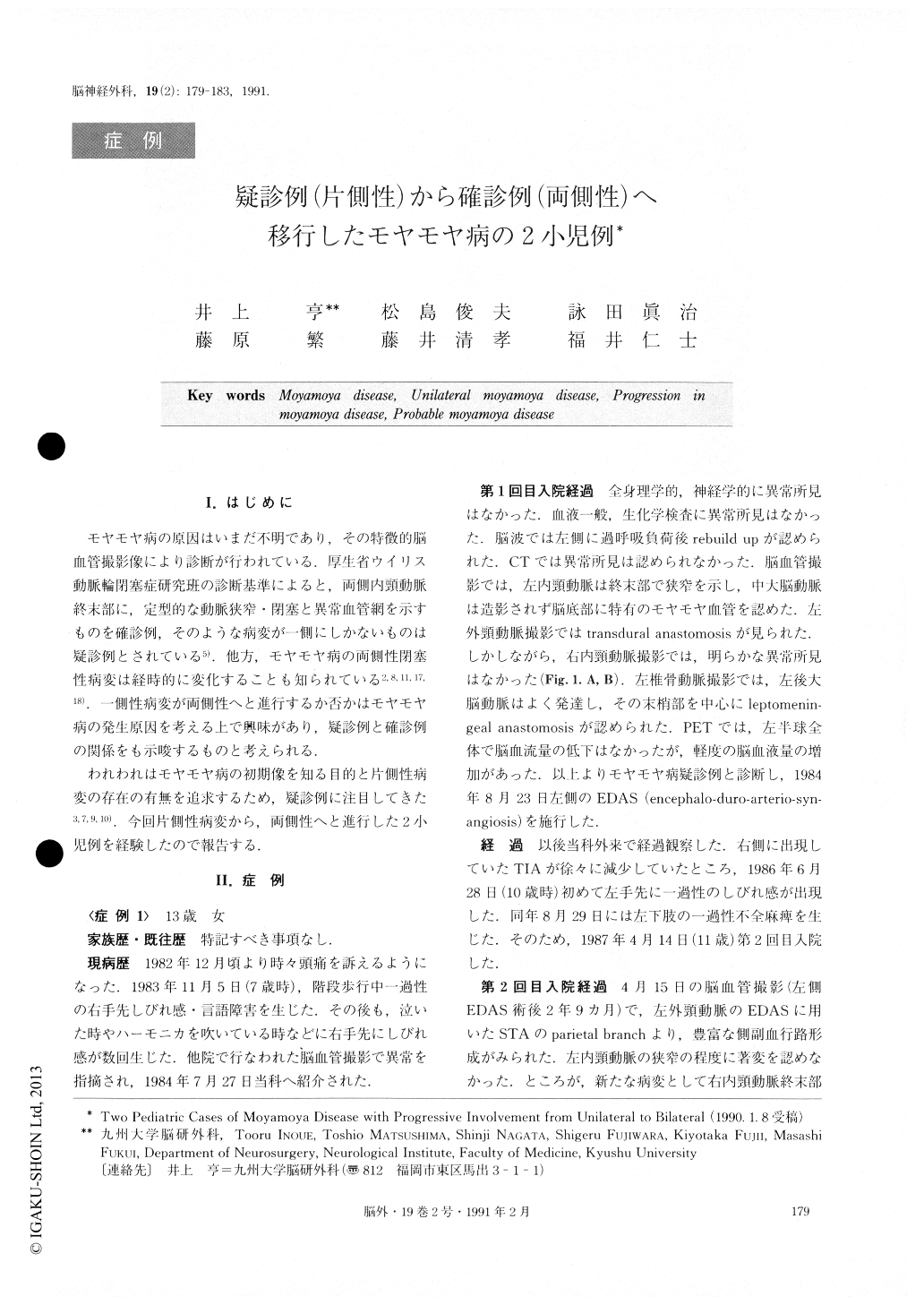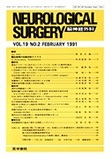Japanese
English
- 有料閲覧
- Abstract 文献概要
- 1ページ目 Look Inside
I.はじめに
モヤモヤ病の原因はいまだ不明であり,その特徴的脳血管撮影像により診断が行われている.厚生省ウイリス動脈輪閉塞症研究班の診断基準によると,両側内頸動脈終末部に,定型的な動脈狭窄・閉塞と異常血管網を示すものを確診例,そのような病変が一側にしかないものは疑診例とされている5).他方,モヤモヤ病の両側性閉塞性病変は経時的に変化することも知られている2,8,11,17,18).一側性病変が両側性へと進行するか否かはモヤモヤ病の発生原因を考える上で興味があり,疑診例と確診例の関係をも示唆するものと考えられる.
われわれはモヤモヤ病の初期像を知る目的と片側性病変の存在の有無を追求するため,疑診例に注目してきた3,7,9,10).今回片側性病変から,両側性へと進行した2小児例を経験したので報告する.
Abstract
Moyamoya disease is defined as having bilateral in-volvement of the internal carotid arteries.
Two pediatric cases of moyamoya disease starting with unilateral involvement of the internal carotid artery are reported. In both cases angiographic findings at onset showed unilateral involvement. Hence, they were filed as a “probable” case according to the dia-gnostic criteria of the Japanese Cooperative Research Committee. The carotid angiograms on the other side showed totally normal findings. Clinical manifestation, EEG findings, angiographic findings, and PET findings in these cases were the same as those of definitive bi-lateral moyamoya disease. The only exception was the unilaterality of the findings. One to three years later the occlusive lesions became bilateral, and this met the criteria as a “definite” case. We consider that some of the cases of moyamoya disease actually start with uni-lateral lesion and develop into bilateral. Angiograms in “probable” cases should be carefuly followed up to establish the disease entity of this lesion.

Copyright © 1991, Igaku-Shoin Ltd. All rights reserved.


